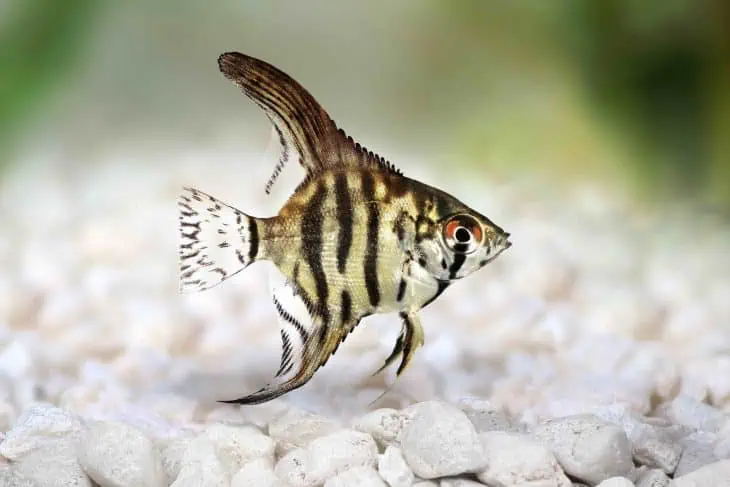
In the event that you are searching for an interesting and delightful type of freshwater fish, think about the angelfish. Angelfish come in a different assortment of colors and patterns. There are also plenty of things to know about them. You’ll be fascinated by all the interesting angelfish facts you will read.
For instance, the majority of them are silver in color. However, they are also available in black, gold, and chocolate shades. Indeed, it is an incredible sight to see when they swim smoothly around the tank. Have them stay in slow-moving and quiet water, and they will be fine!
Aside from being easy on the eyes, angelfish are also easy to take care of. You just need to have a large tank and a good filtration system that doesn’t create excessive currents. This is because angelfish are not fast swimmers. Wondering where they came from? Angelfish are endemic to a large area of South America, including the Amazon River. In addition, they are popular for having long fins that resemble an angel’s wings.
They may be called “angels,” but they got a pretty nasty side, too! However, it is something that is in their nature. If a fish can fit another fish in its mouth, it will usually do so! Most fish will consume fish smaller than them, so if you put fish like fry and tetras along with angelfish, you’ll know what will happen! So, pick fish that are about the same size as your angelfish and everything will be okay.
Did what we just share make you more interested in angelfish? Know more about them with these 40 angelfish facts!
- There are around 90 species of marine angelfish.
- Most species of angelfish measure around 8 to 12 inches long or 20 to 30 centimeters.
- They can weigh up to 2 pounds or 0.97 kilograms.
- Some species of angelfish can live up to 15 years.
- Angelfish usually reach maturity at 6 or 12 months or more.
- Angelfish is a small type of freshwater fish.
- Angelfish, like tilapia and oscar, is a member of the Cichlidae family.
- It originated from the Amazon Basin and Orinoco Basin in South America.
- The body of angelfish allows them to camouflage among roots and plants.
- Angelfish have a unique, diamond-shaped body.
- The scientific name of angelfish is Pterophyllum.
- Angelfish has brilliant colors, ranging from solid silver to stripes, to black, and silver.
- Their color helps them blend into rock, algae, and coral reefs.
- Angelfish can be seen in the Indian, Atlantic, and the western Pacific Ocean.
- They are one of the most popular aquarium fish.
- It is believed that angelfish are named after the shape of their fins, which resemble an angel’s wing.
- Male and female angelfish look the same, unlike other fish breeds.
- Some experts agree that angelfish are intelligent, they can recognize and remember the face of their owners for months or even years.
- The name Pterophyllum comes from the Greek word “pteron,” which means fin or sail, and “phyllon,” meaning leaf.
- Angelfish have the ability to change color as they grow older.
Angelfish is an omnivore.
In the wild, angelfish mostly consume sponges, Algae, plankton, shrimps, white worms, insects, and small crustaceans. In captivity, they may also eat live plants, freshly hatched brine shrimp, and bloodworms. It is also good to give them flakes or put them on a pelleted diet.
Queen angelfish commonly live in the western Atlantic Ocean.
Queen angelfish, commonly known as golden angelfish, yellow angelfish, or blue angelfish, is a species of marine angelfish. They commonly live near the coral reefs in the western Atlantic Ocean. Queen angelfish have an oval-shaped, flattened body. It also has a small mouth and small teeth that look like brush bristles. Furthermore, the queen angelfish is one of the most stunning aquatic animals because of its sparkling blue body, yellowtails, and orange and light purple highlights.
Koi angelfish is one the most popular variety of angelfish.
Koi angelfish is an incredible species that features black, white, gold to orange coloration. Unlike the other types or species of angelfish, Koi angelfish have a very thin and tall body. In addition, Koi angelfish prefer aquariums that are heavily planted, with rock formation and a very gentle flow. As long as there is plenty of space, Koi angelfish can live with other varieties of fish.
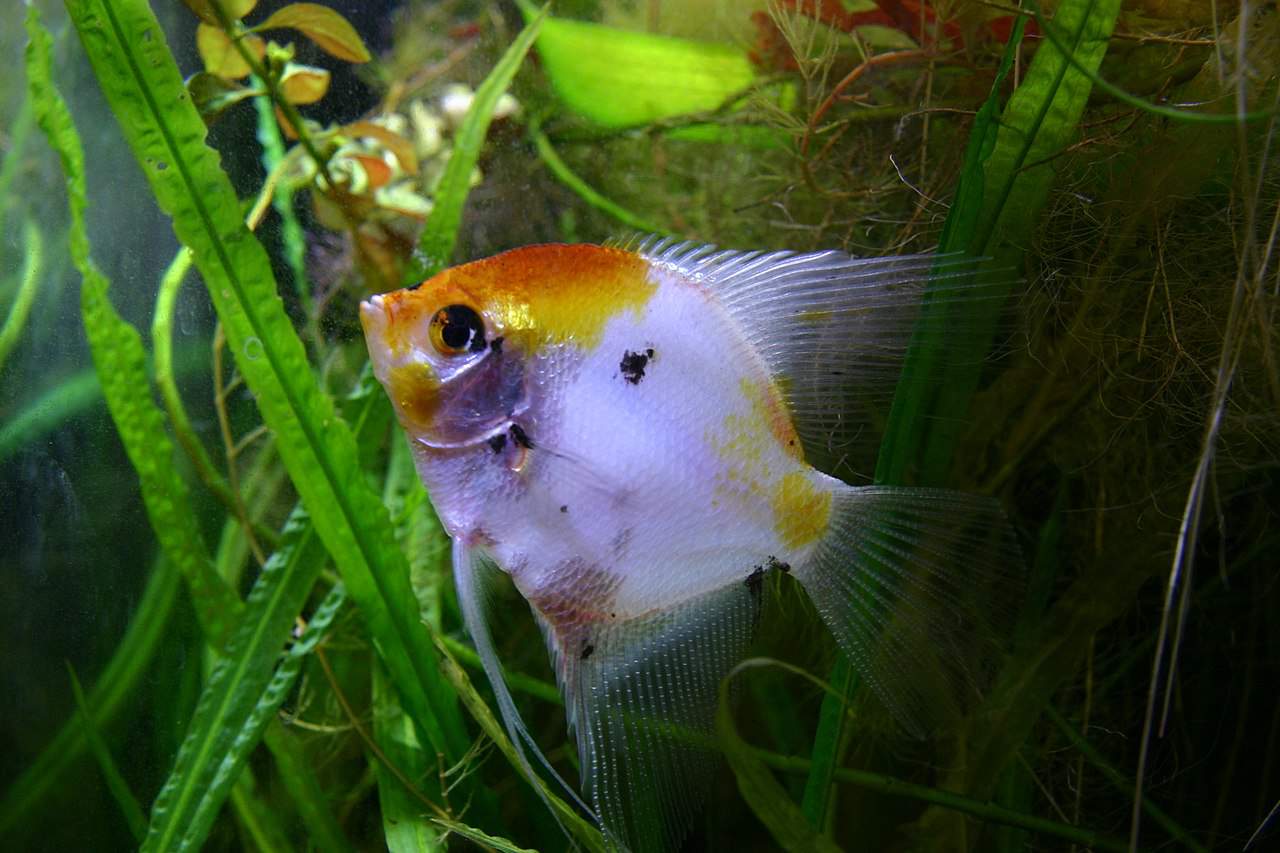
Black angelfish is a captive-bred type.
Black angelfish is a captive-bred variety of angelfish. Captive breeding means the propagation of animals to help preserve species and prevent extinction. Black angelfish is mostly black, but some parts of the body have varying shades of black. Black angelfish loves aquariums that are well planted, have around 30 gallons of water and are slightly acidic. Black angelfish consume vegetables and other meaty food, as well as pelleted and frozen food like shrimps and bloodworms.
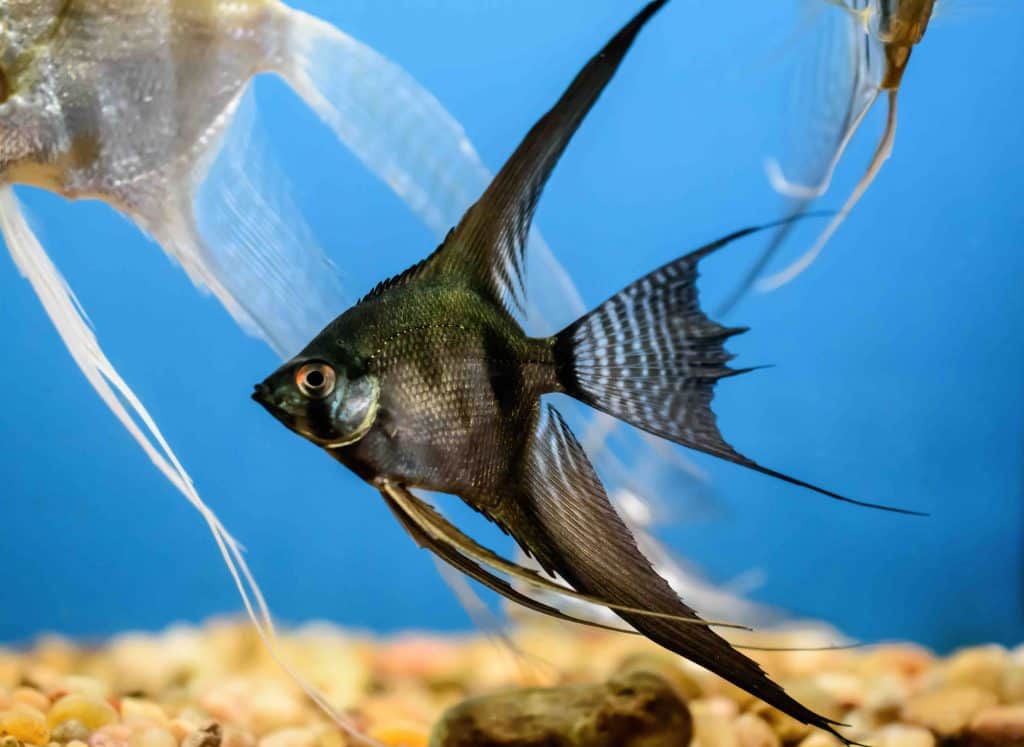
Emperor angelfish is one of the favorites of photographers and artists.
The Emperor angelfish is a variety of marine angelfish. It is endemic to the Indian and the Pacific Ocean, from the Red Sea to Hawaii and the Austral Islands. With its unique and brilliant pattern of colors, Emperor angelfish is one of the favorite subjects of artists, photographers, and aquarists. The young and adult Emperor angelfish have different designs on their body. The young Emperor angelfish has a dark blue body with curving lines, while the adult has blue and yellow horizontal stripes, a light blue face, and a yellow tail fin.
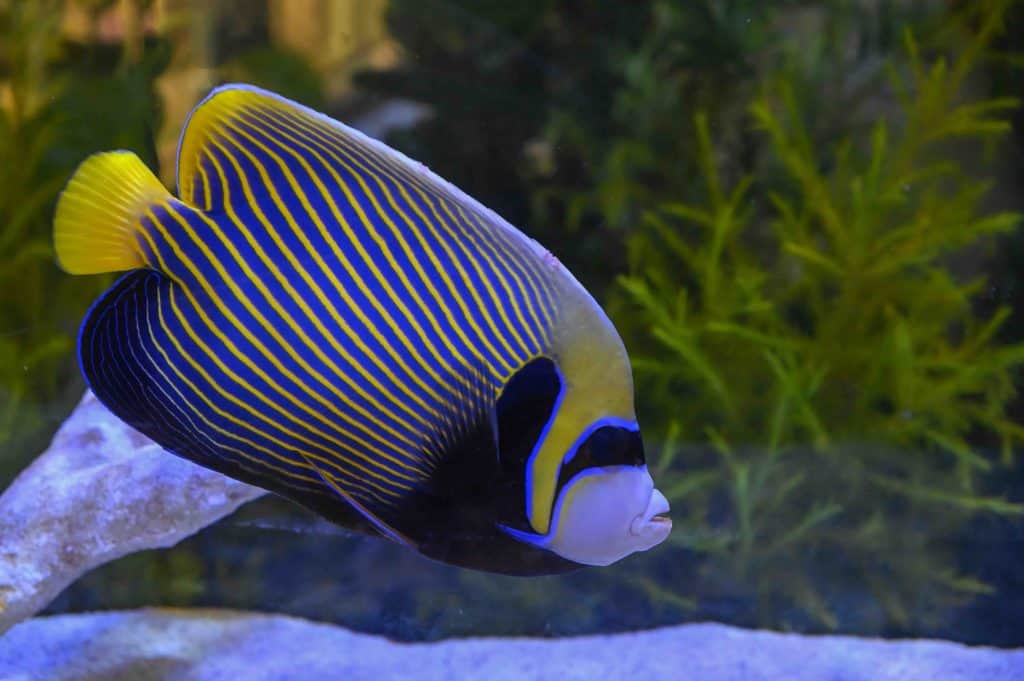
Panda angelfish is a famous variant of angelfish.
Panda angelfish is one of the most uniquely colored types of angelfish. The pattern on their body varies, depending on the specimen, although they are usually seen with a white body and black splotches on their body. The Panda angelfish is also a peaceful type of fish, albeit a bit territorial, they eat other fish in the tank if they do not have enough space. Yikes! Just like the other species, Panda angelfish also love aquariums with driftwood, rocks, and plants.
Marble angelfish has black, white, and yellow patterns.
Marble angelfish have marble-like markings of white, black, and yellow. It also has long, thin, delicate-looking fins. Marble angelfish prefer to live in well-planted tanks, with around 30 gallons of warm, slightly acidic water. When breeding, it is best to separate them in one aquarium until they pair off. After they are paired off, there should be a flat surface where they can lay eggs.
Silver angelfish has stripes that fade or darken.
Silver Angelfish, also known as Freshwater angelfish, or Common angelfish, have black vertical stripes that darken or fade depending on their mood. This species originated in the Amazon river basin of South America. An adult measures around 6 inches or 15 centimeters long.
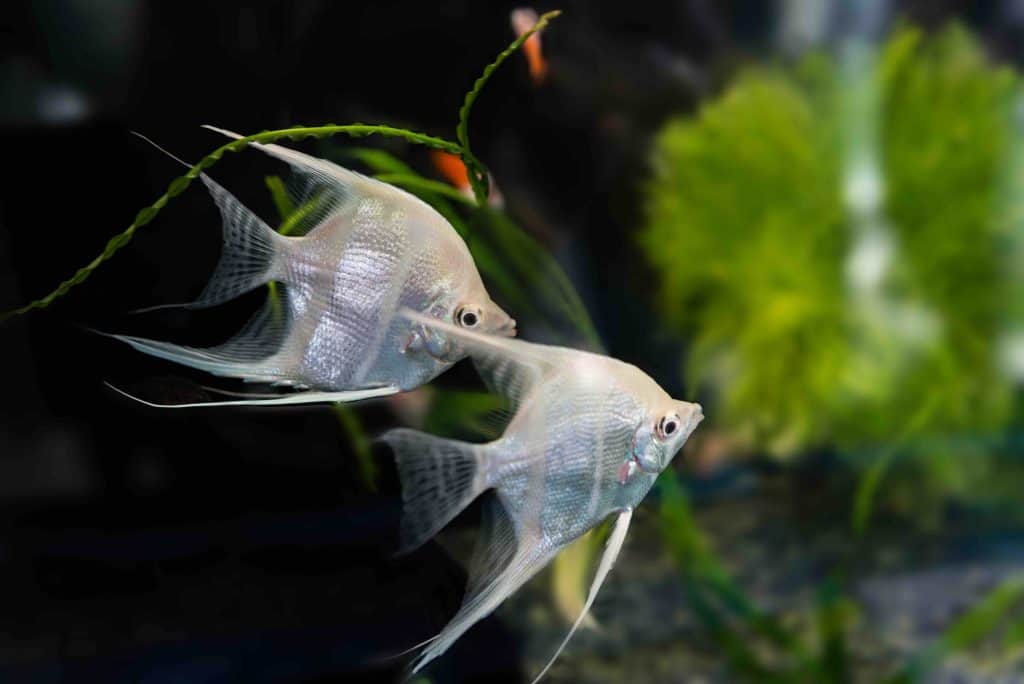
Angelfish are generally peaceful sea-dwellers.
Generally, angelfish are peaceful. They only tend to be aggressive when trying to pair off to spawn or lay eggs. They can also be aggressive when trying to establish a hierarchy among fish types in a tank.
Angelfish are monogamous.
They usually have long-term relationships and they protect one another from threats. Some breeders have experienced and noticed that upon the death or removal of one of the mated pair, some angelfish refuse to mate or to pair up with other angelfish.
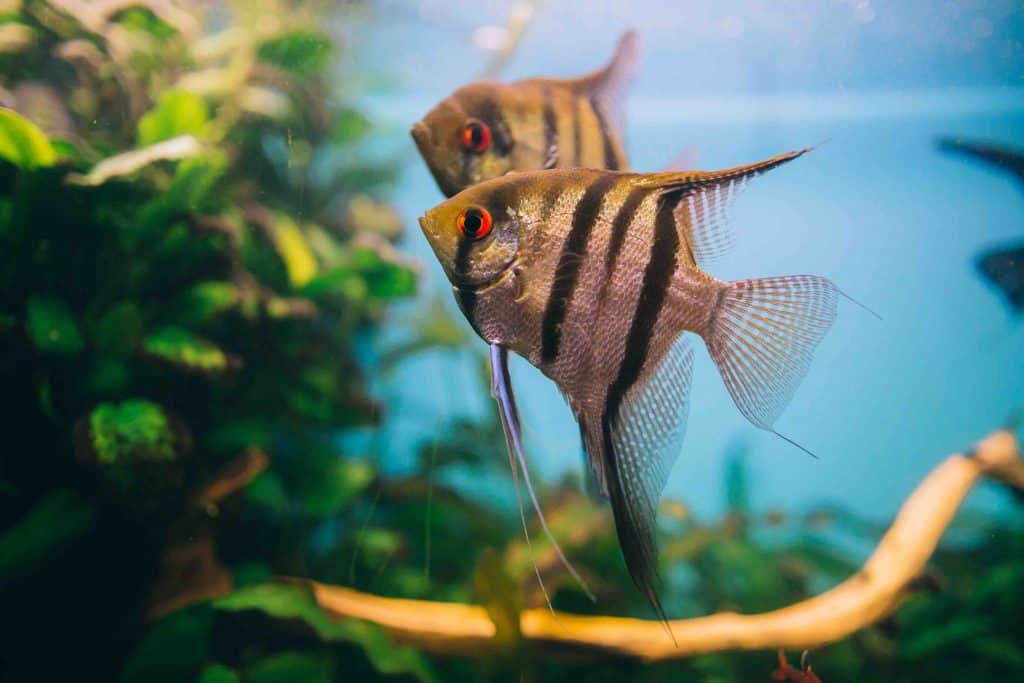
Angelfish can lay from 100 to 1200 eggs.
Depending on the species, an angelfish can lay from 100 to 1,200 eggs in one laying, depending on their variety. A pair of angelfish has the capacity to produce eggs every two weeks if eggs are removed from the aquarium immediately.
Both male and female angelfish take care of their fry.
The female angelfish usually lay eggs on broadleaf plants in the aquarium or glass of the tank. It will lay a line of eggs, which the male angelfish will fertilize. The process will continue until around 100 to 1,200 eggs are laid. Both parents take care of their young throughout the development, they swim very close to the eggs to maintain a high rate of water circulation. Once the eggs are hatched, the fry stays on the surface and survive by consuming the residue of the yolk sacs.
Angelfish is susceptible to ich parasite.
Ich, also called white spot disease, is a common parasite that attaches itself to the fish. The parasite can spread, starting with one fish then onto the next. They live within the tank, before getting into the fish. Some factors like congestion, poor diet, and habitat may lead to ich infestation.
Angelfish is vulnerable to Gill Flukes.
Gill Flukes is a parasitic disease that affects the skin and gills of fish. This is usually caused by stress and improper tank conditions. The parasites may get into the skin of angelfish and may result in ulcers and infection. When infected, angelfish may experience red skin, breathing difficulties, and gills that look chewed or shredded.
Angelfish prefers water temperature between 78°F and 84°F.
Captive-bred angelfish accept different water conditions, though they prefer warmer water. It is also important to keep the water pH level between 6.8 and 7.8. Ideally, water temperature should be between 78°F and 84°F (25°C to 28.8°C).
Male angelfish has forehead bump while female doesn't have.
It is quite hard to differentiate between male and female angelfish. Male angelfish have a forehead bump or hump, while the female has none. Moreover, the ventral fin, (fin near the belly), of the female angelfish is smoother and round. while males have forked ventral fins that resemble a Y-shape.
One of the most expensive species of angelfish costs around $30,000.
One of the most expensive species of angelfish is the Peppermint Angelfish which costs around $30,000. Peppermint Angelfish is found in the reefs of the eastern-central Pacific Ocean. It has an oval-shaped, orange body with five white stripes. Peppermint grows at a maximum length of 7 centimeters or 2.8 inches. If we will do some math, an inch of Peppermint is around $10,000! That is pretty pricey!
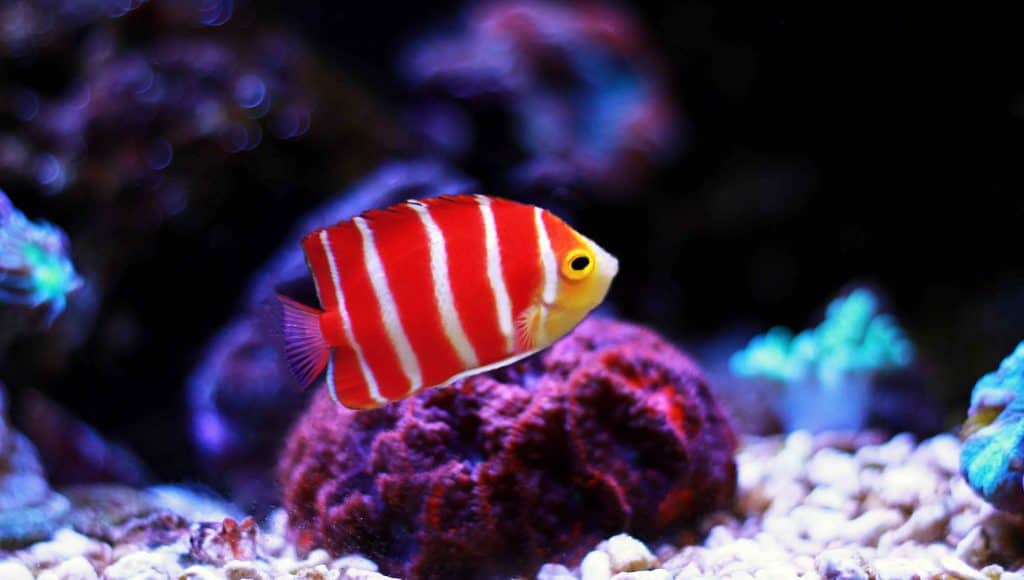
Angelfish spend their time swimming on the top surface.
Most of the time, angelfish swim on the top surface or close to the top surface of the tank. Hence, it is ideal to choose tank mates or other fish with angelfish that hang out in the lower areas of the tank. This will keep the fish from attacking each other and will also lessen fights over food.
Fish that are at least 2 inches in size would be the best tankmates for angelfish.
Size is an important factor when choosing tank mates for your angelfish. Angelfish will eagerly consume smaller fish that will fit their mouth thus it is not good to make a 1-inch fish their tankmates. Preferably, angelfish tankmates must be at least 2 inches or 5 centimeters long. However, it is not safe to house them with big fish like jaguar, cichlids, Oscars, or redhead cichlids.
Angelfish's best tank mate can be Corydoras Catfish.
One of the most compatible tank mates of angelfish is the Corydoras Catfish. Corydoras Catfish originated in South America. They often stay in the lower part of the tank, while angelfish stay most of the time on the middle level, which means they will not interact with one another. Other fish species like Dwarf Gourami, Boesemani Rainbowfish, and Praecox Rainbowfish can also be good tank mates for angelfish.
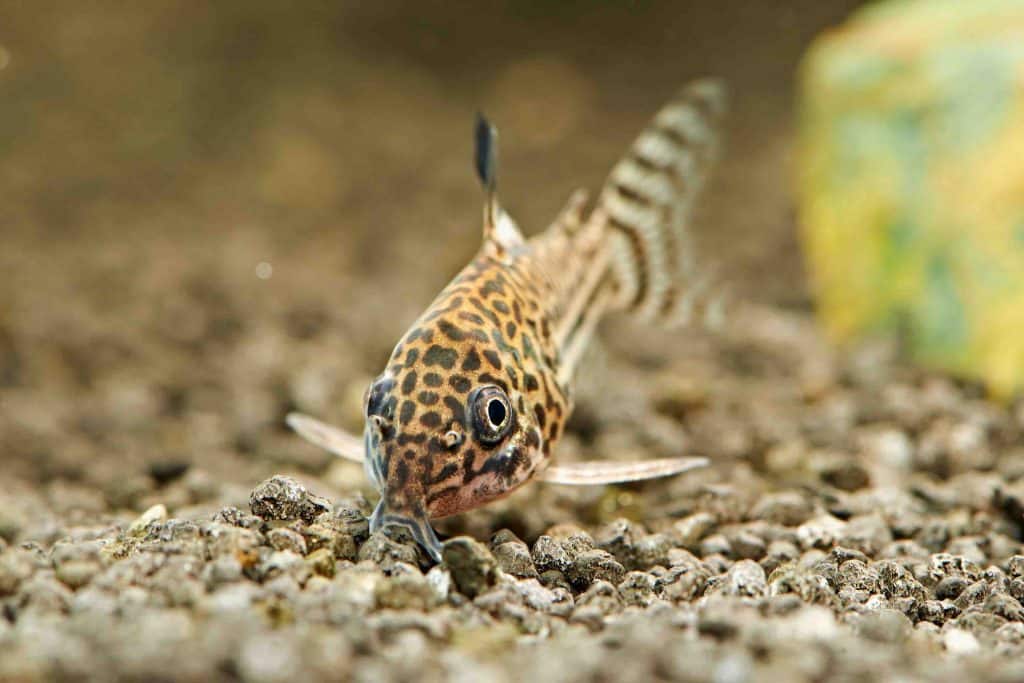
Was this page helpful?
Our commitment to delivering trustworthy and engaging content is at the heart of what we do. Each fact on our site is contributed by real users like you, bringing a wealth of diverse insights and information. To ensure the highest standards of accuracy and reliability, our dedicated editors meticulously review each submission. This process guarantees that the facts we share are not only fascinating but also credible. Trust in our commitment to quality and authenticity as you explore and learn with us.


